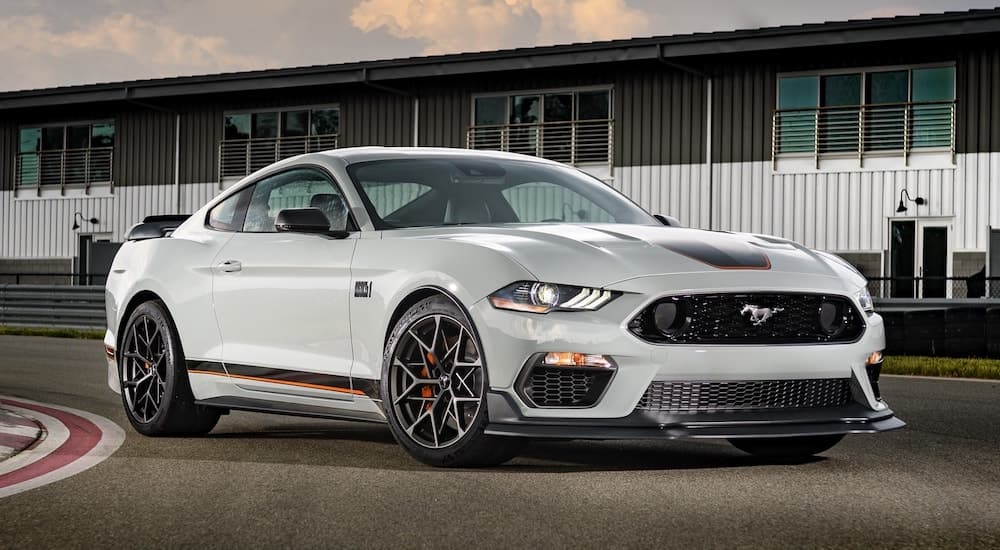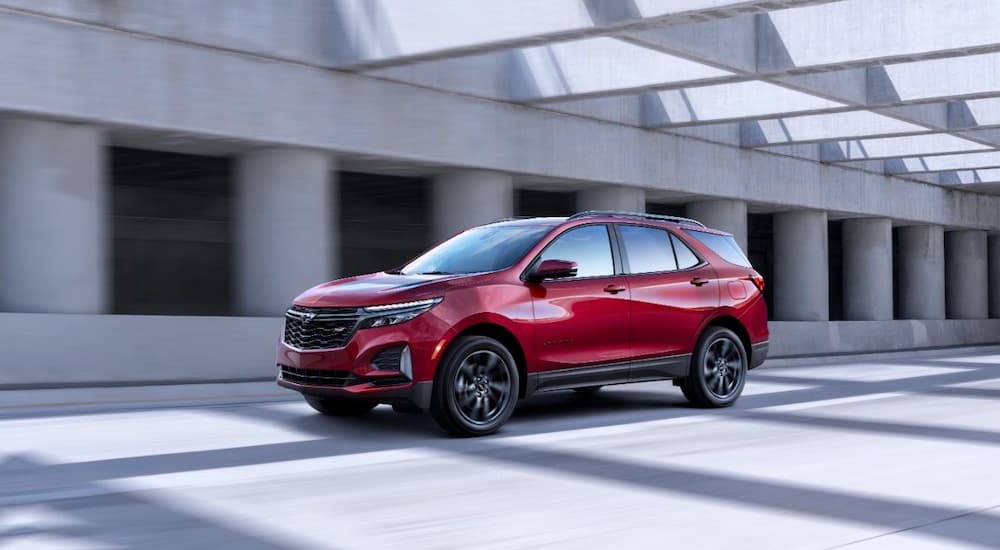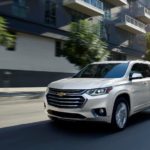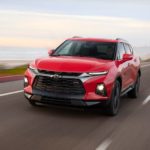Ford vs Chevy is a rivalry seemingly as old as time. In fact, you could even say that Chevy was founded specifically to compete with Ford, following William C. Durant’s failed attempt to buy out Henry Ford back in 1909. However, over a hundred years later, it is Chevy that is showing signs of faltering while Ford is continuing to forge ahead, burnishing its brand image and developing new technologies for the future. Although Chevy executives have laid out a grand vision for where they want their brand to go, those plans have yet to reach fruition, and the current Chevy products are increasingly falling short. The end result is that Ford is now poised to steal market share from Chevy and may just end this age-old rivalry once and for all.
Rebranding for a New World
One of Ford’s greatest successes, and Chevy’s greatest failures, is adapting the brand to the modern consumer. Both of these brands were founded in the early 20th century on the principles of mass production, churning out cheap cars for the growing middle class. In the famous words of Henry Ford, you could have the Model T in any color you liked––as long as it was black. However, as America grew more prosperous, drivers began to want more. GM responded by developing a hierarchy of brands, ranging from Chevy to Cadillac, giving drivers options.
This strategy worked at first, but the rising cost of developing new cars meant that the multitude of GM brands were forced to start sharing technology until the only difference between a Chevy and a Cadillac was the badge on the front of the car. Consumers weren’t fooled, and GM sales spiraled downward, cutting brands until only four remain today. But despite having fewer brands in the family, the individual brands continue to offer very one-dimensional products, particularly Chevy.
Whether you buy a base model Malibu or a top trim Tahoe, every Chevy (with the exception of the iconic Corvette) offers a fairly similar experience, distinguished mostly by the size of the model and a few small features. Although there has been a recent attempt to create a luxury image for the High Country trim, a sporty image for the RST trim, and an off-roading image for the Z71 trim, all of these are somewhat half-hearted with no major changes to the vehicles and are only available on a few models.
Iconic Names Give Customers What They Want
Meanwhile, Ford has embraced the idea of brand diversification, giving drivers more options than ever before. Iconic names like Mustang, Bronco, and Raptor have transformed from individual models into families of vehicles and products that each have their own unique flavor. While the F-150 Raptor might be based on an F-150, it offers a completely different experience. And although the Bronco Sport may share a platform with the Escape, no one would ever confuse the two or think they appeal to the same type of driver.
Even within Ford’s more mundane models, it is creating unique options for customers. The popular Ford Explorer, for instance, now offers both a high-performance ST version and an off-roading Timberline version––and they aren’t just appearance packages either. In fact, Ford has given them subtle but serious engineering upgrades, from the Torsen rear differential in the Explorer Timberline to the stiffer suspension in the Explorer ST, that many drivers would never even notice.
While Chevy is stuck in the past, emphasizing cost-cutting, simplification, and parts-sharing as part of its traditional mass-production strategy, Ford has embraced modern consumer trends and offers vehicles as unique as its buyers. By focusing on offering real upgrades, even for simple family SUVs like the Explorer, Ford has recognized that the modern car shopper is more informed than ever before and won’t be bamboozled by some fancy decals and a few cheap appearance changes. If Chevy wants to grow its market share outside of the fleet and rental car industry, it will need to seriously look at its lineup and start offering more options that customers actually want.
Meeting the Challenges of Electrification
It’s no secret that the next big thing in the automotive industry is electric vehicles. Given the increasing pressure to eliminate gasoline and diesel altogether, how manufacturers tackle the challenges of electrification will make or break brands. However, this is one area where Chevy is already floundering while Ford forges ahead. This should be particularly worrying for Chevy fans as GM was one of the earliest investors in EV technology and has sold considerably more electric vehicles than Ford. So how can Ford be winning?
Comparing Ford and Chevy’s approaches to electrification could be best described as the tortoise and the hare. GM took an early lead, developing the EV1 prototype all the way back in 1996. As the technology matured, Chevy was tapped as the brand to lead the EV revolution, debuting the Volt plug-in hybrid in 2011 and the Bolt EV in 2017. By the time Ford launched its first EV for 2021, Chevy had sold nearly 100,000 electric cars and was telling everyone who would listen how they were on course to becoming the next Tesla.
Unfortunately for Chevy, they had already failed before they had even begun. Because of GM’s mass-production mindset and Chevy’s place on the bottom rung of its remaining family of brands, Chevy’s approach to the EV market was to build a cheap and simple vehicle with minimal development costs. While the Bolt EV was an undeniable success, filling the huge gap in the market for a practical electric car that cost less than the $40,000+ Tesla Model 3, it was not a vehicle that established any sort of brand reputation or could serve as a springboard for future EV development. In fact, many people didn’t even realize that the Bolt and Volt were two different models until the LG battery packs in the Bolt EV began catching fire and made national news.
The Tortoise Takes the Lead
GM seems to have realized the failure of this strategy. Its next-generation of EVs all use its proprietary Ultium battery technology, and it has debuted this technology in the flashy GMC Hummer EV and Cadillac Lyriq rather than in another inoffensive Chevy. This could have been a smashing success if it had happened just a few years ago, but the misstep with the Bolt EV cost GM dearly. Not only did GM burn through all of the Federal EV tax credits selling the Bolt EV, leaving the new models at a serious price disadvantage compared to the competition, but the delays in developing the Ultium technology and the factories to build it let Ford and other brands launch their own exciting electric cars.
By delaying the launch of its first electric vehicle until the technology had matured, Ford ended up leapfrogging ahead of Chevy and seizing the imagination of car shoppers. The 2021 Mustang Mach-E checked all the right boxes, combining a capable powertrain with the popular SUV bodystyle and finishing it all off with the iconic Mustang name and spirit. In fact, Ford didn’t even bother trying to compete with the Bolt EV, instead targeting Tesla itself. The strategy more than paid off, and the Mach-E became the second best-selling electric SUV on the market in its debut year.
Ford isn’t interested in slowing down either and is already launching the 2022 F-150 Lightning. Based on the same exact chassis as the regular F-150, Ford received over 200,000 reservations for the Lightning before it even entered production. This incredible success forced Chevy to unveil the 2024 Silverado EV in January 2022, but the attempt to steal some of Ford’s thunder did little more than reveal just how far behind Chevy is when it comes to developing electric vehicles. That hasn’t stopped Chevy from announcing several more planned electric models, including a Blazer EV and an Equinox EV, but while Chevy is talking a big game, Ford is actually delivering vehicles.
Forget Ford vs Chevy – The Future Might Be Ford vs Wuling
Ford vs Chevy has been a running theme in the American automobile industry for over 100 years. But recent events suggest that Ford might just have left Chevy in its dust, permanently. Chevy isn’t going anywhere anytime soon, but the brand’s trajectory isn’t heading in the right direction. Last year Chevy sold 1.4 million vehicles, making it the third-largest brand in America––but it was still nearly half a million vehicles behind Ford. With a brand strategy still mired firmly in the past, and a collection of future vehicles that are nowhere near ready for production, Chevy isn’t showing any signs that it has what it takes to continue its long-standing rivalry with Ford into the future.
Things look even more troubling when you look at GM sales outside of America. While it may continue to brand itself as an all-American company, GM actually sells the majority of its vehicles in China. In 2021, GM sold over 2 million vehicles in the Chinese market, and only 230,000 of those were Chevys. The best-selling GM brand in China is Wuling, which sold over 1.4 million vehicles last year. Given that Wuling occupies the same entry-level position that Chevy used to hold and is a far more EV-oriented brand (it sold nearly half a million electric cars last year alone), who knows if GM might decide it’s time for another round of downsizing and bring Wuling to the American market to replace Chevy?






